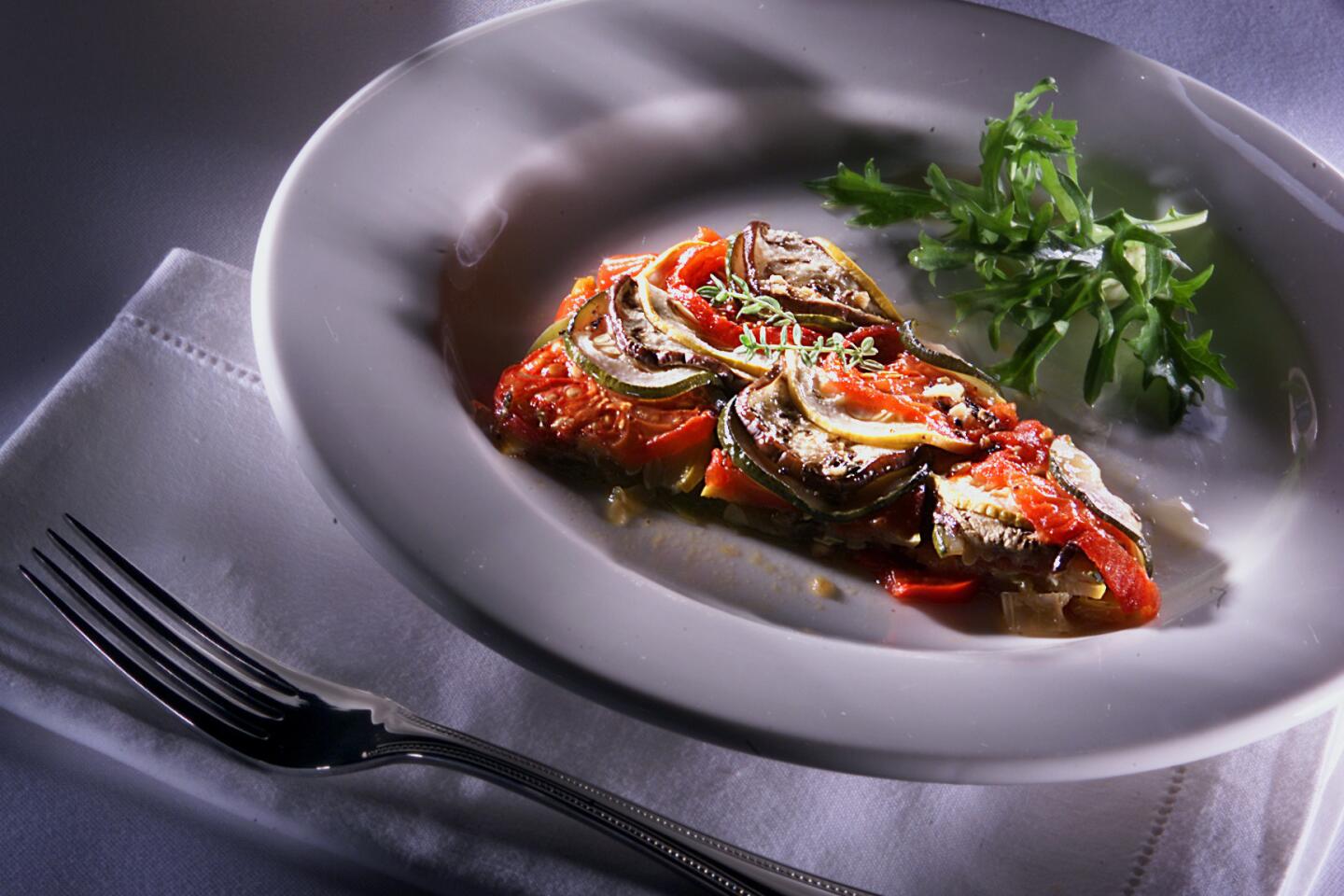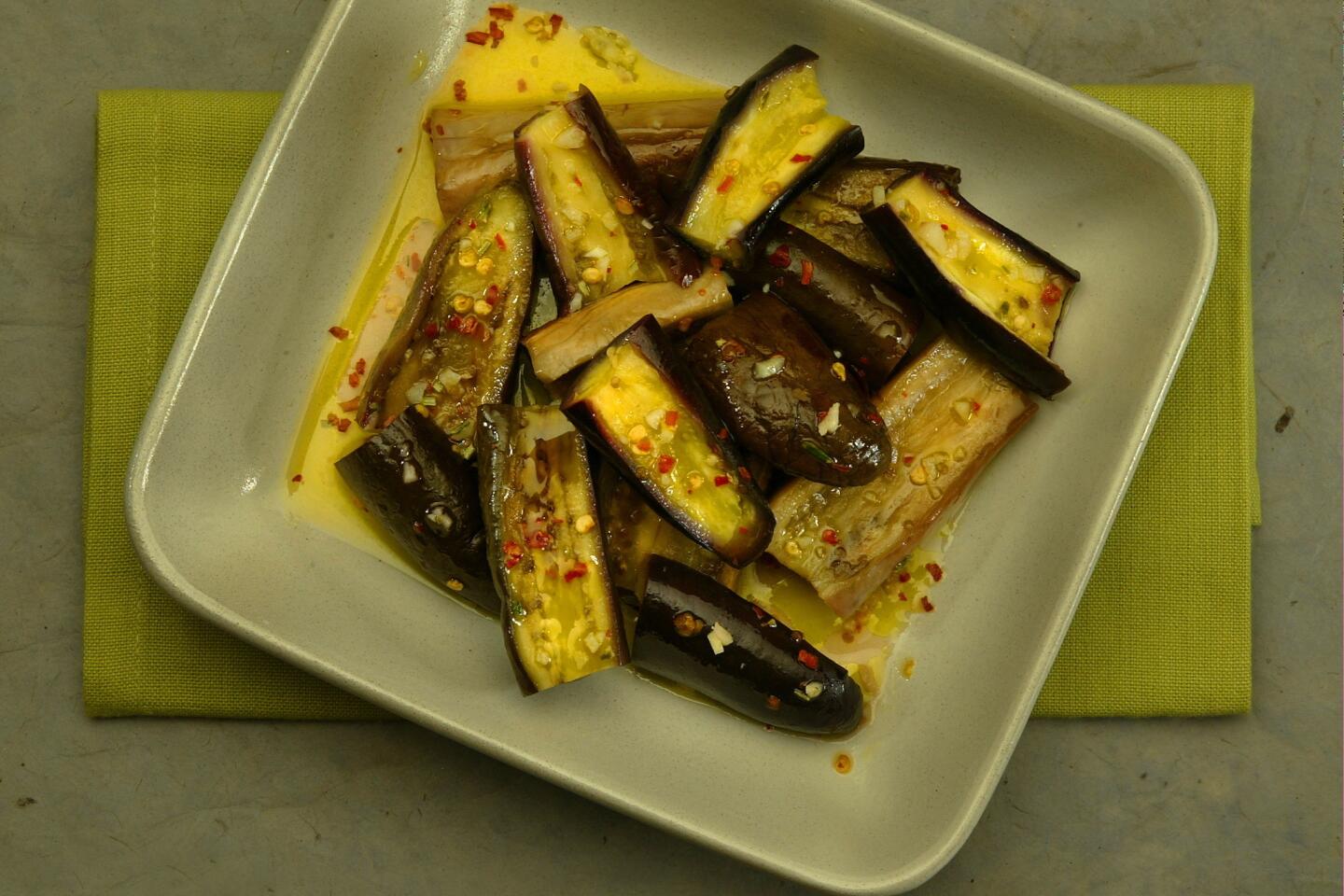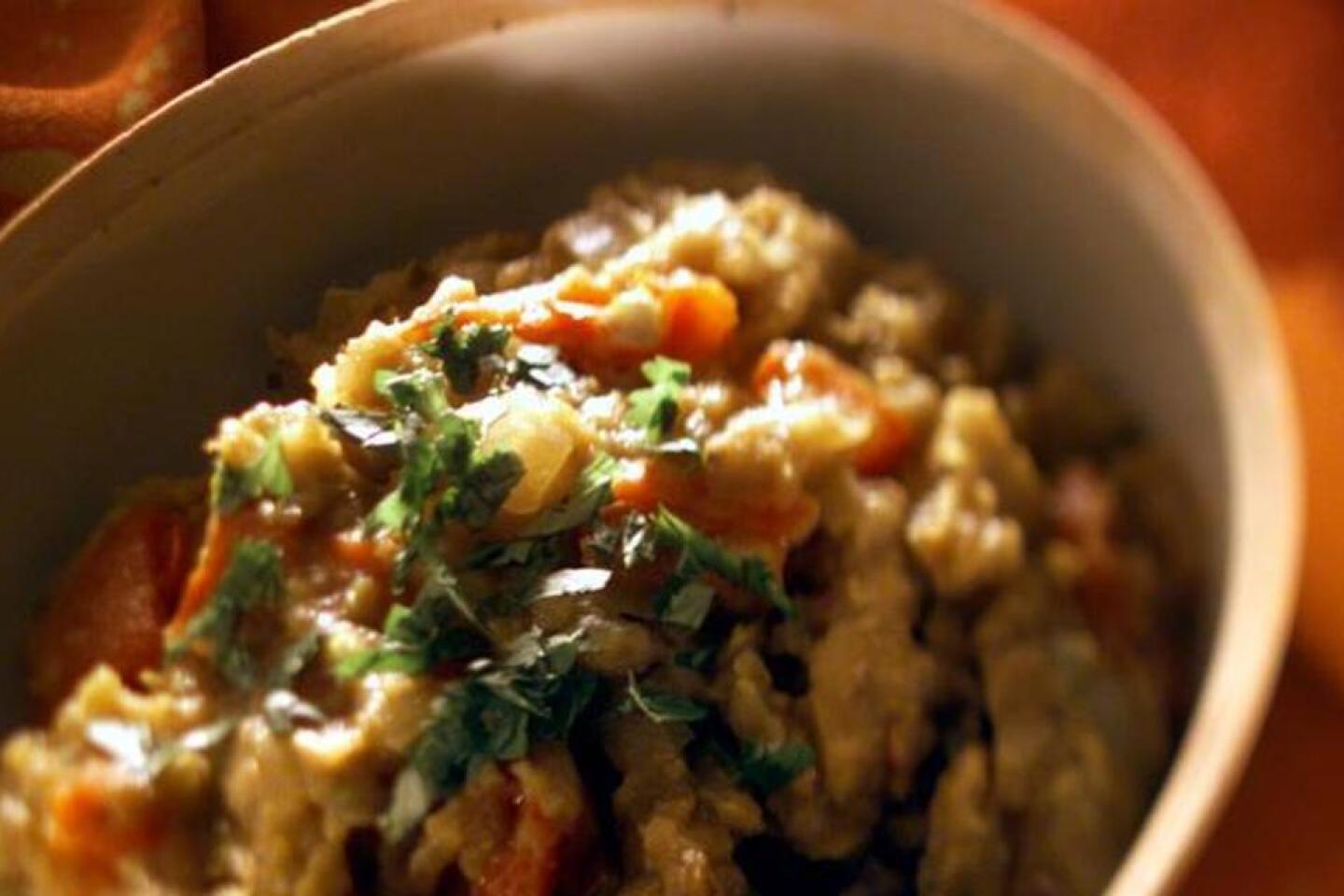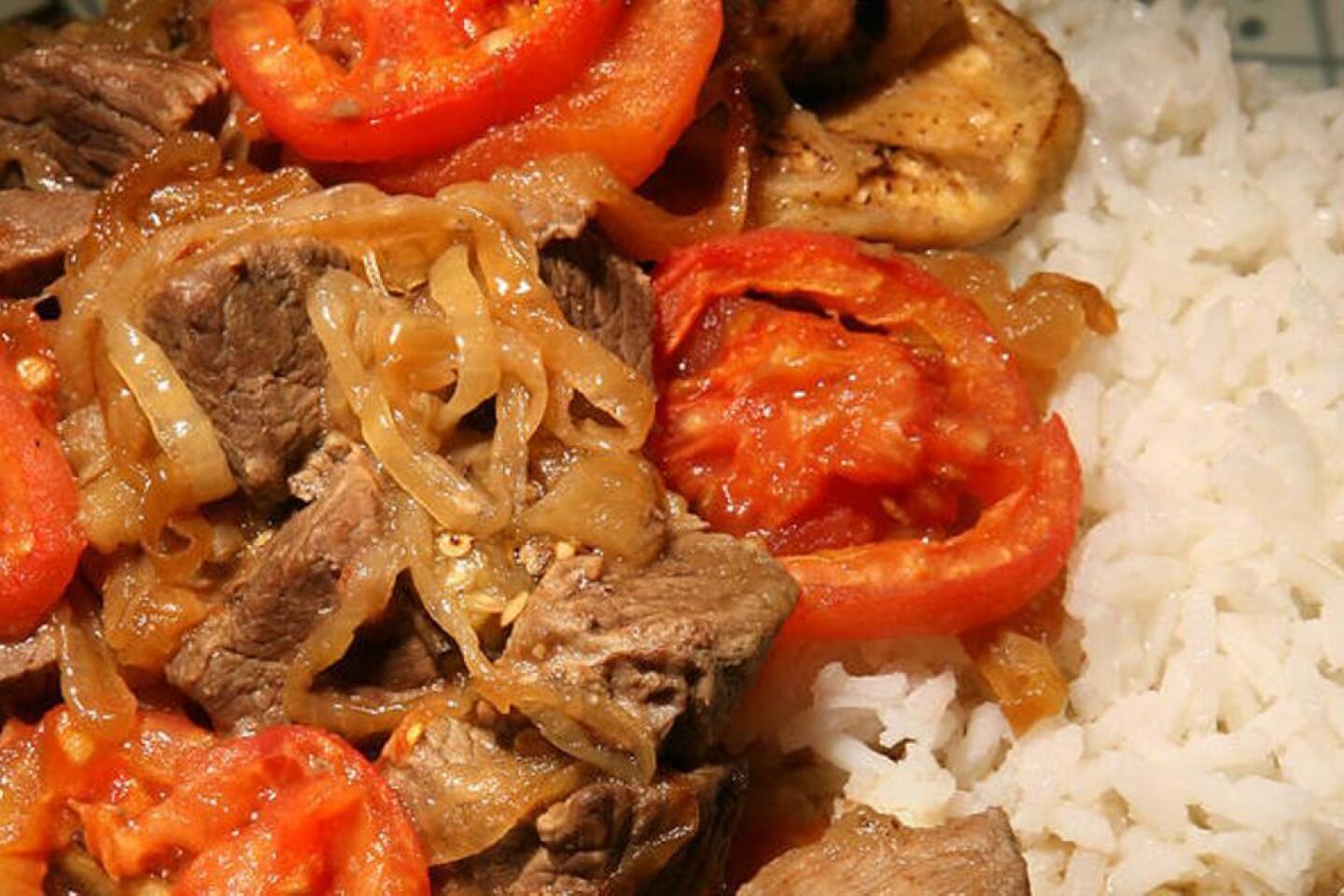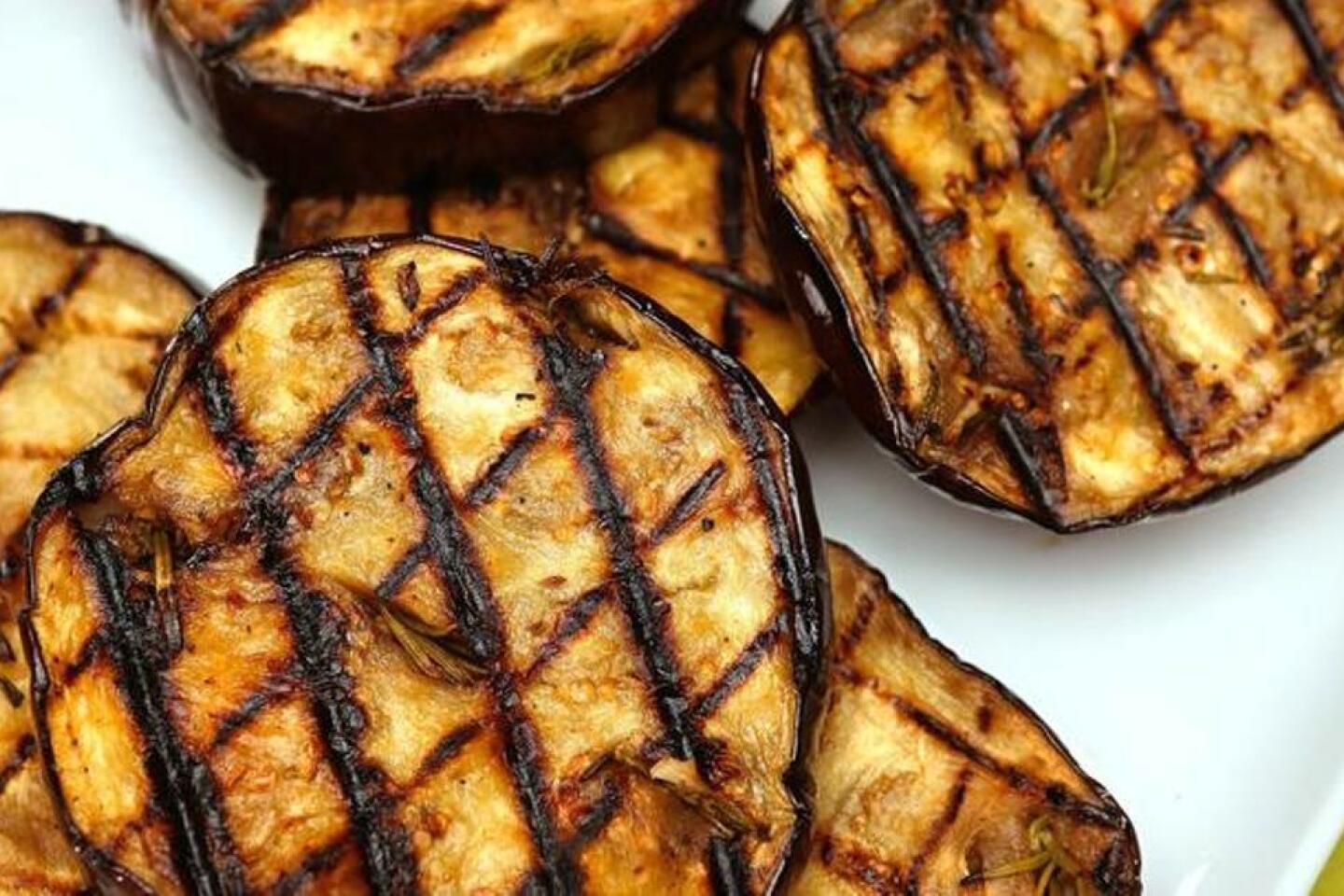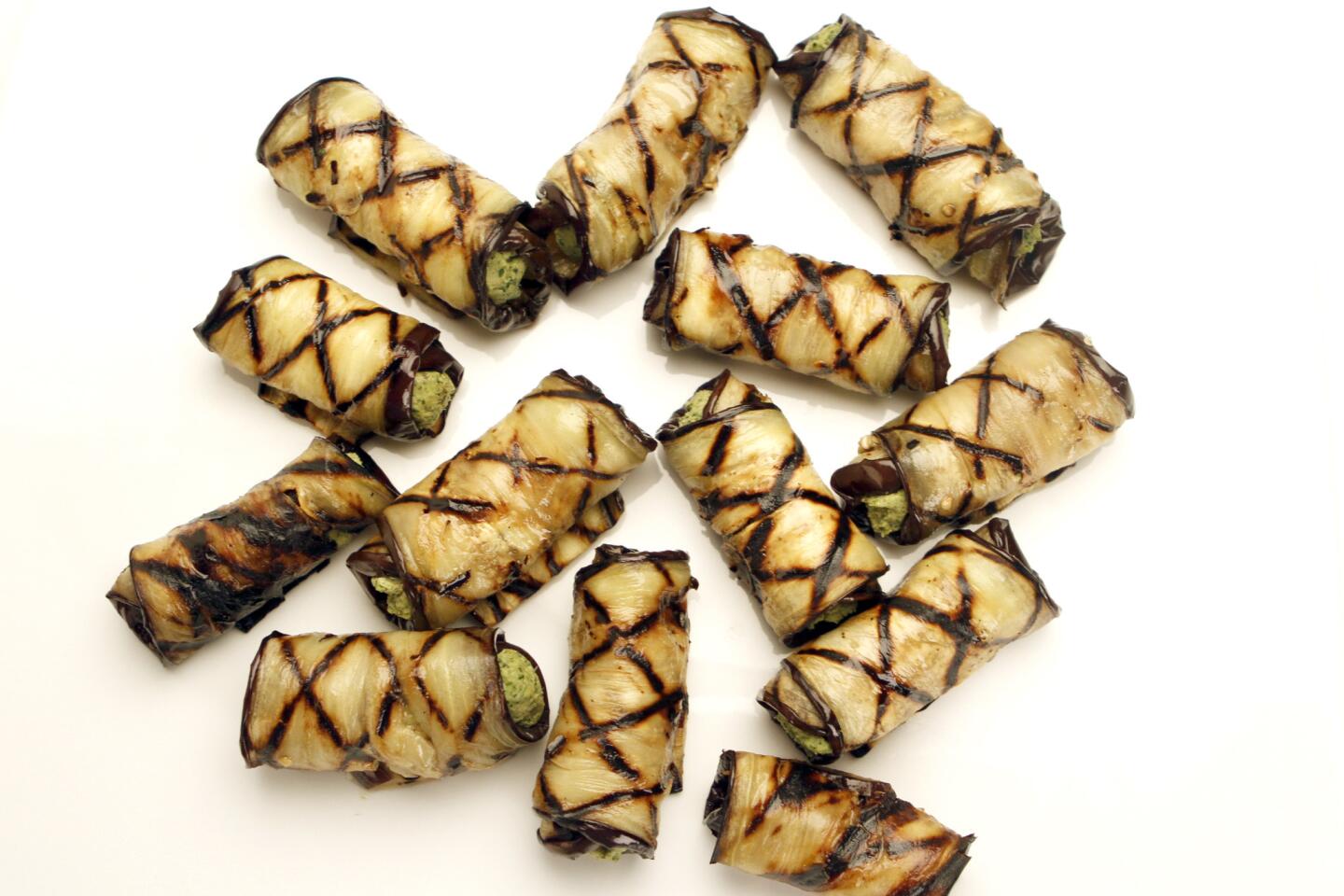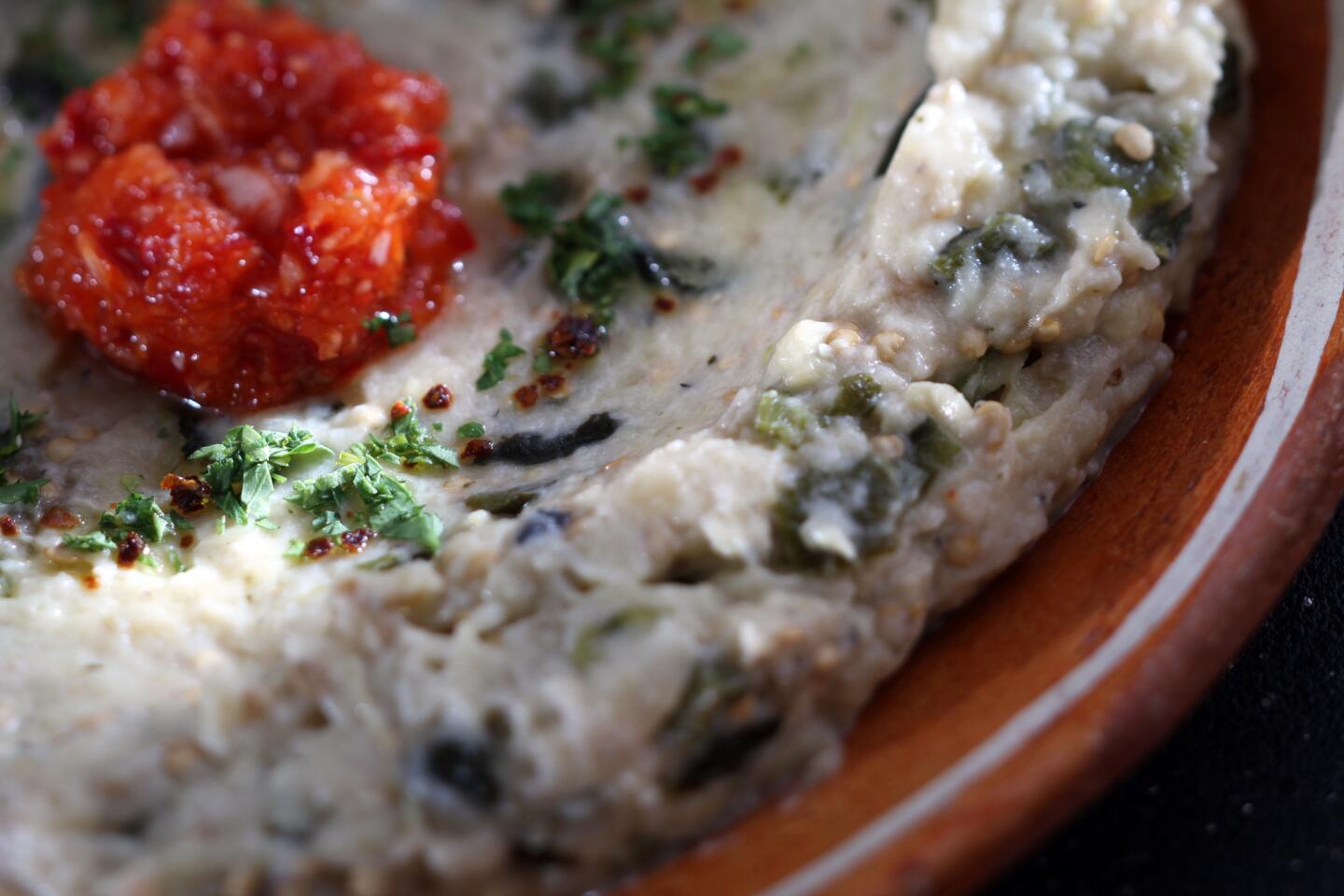Buy This Now: Eggplant, with 12 recipes
- Share via
Don’t know what to make of the incredible variety of eggplant shapes, sizes and colors you’re finding at the market? You’re not alone. In fact, scientists aren’t even sure of the exact number.
From its ancestral home in Burma (Myanmar today), eggplant has migrated to become a staple in India, China, Southeast Asia and much of Africa and the Mediterranean. And as is so often the case after centuries of small-scale subsistence cultivation, there is a rainbow of poorly defined varieties, one shading into the other.
Several years ago, I went on a farmers market hunting expedition at the peak of eggplant season. Stopping at just two locations, I found more than a dozen kinds of eggplant being sold.
As impressive as this bounty was, it represented but a small sample of what is out there. In his “Cornucopia II,” an authoritative guide to edible plant life, Stephen Facciola lists 56 major eggplant varieties.
It would be nice to say that the visual variety of eggplants was matched by an equally wide range of flavors, but no. For the most part, eggplant tastes like eggplant.
The differences are more likely to be textural. Eggplant can be firm, slightly stringy or creamy. This can be hard to predict, although generally the familiar black globe eggplants are the most fibrous, while the slender Asian eggplants are silkier and those little round Southeast Asian and Indian eggplants tend to be the seediest.
Generally speaking, the seedier the eggplant, the more bitter the flavor. And the older the eggplant, the more bitter it is too. For that reason, be sure to shop carefully, choosing the firmest you can find. That, and not the often-rumored male/female dimple, is the key to good flavor (and eggplants, being fruits, are neither male nor female anyway).
Many cookbooks tell you that eggplant has to be salted before cooking. That’s a great idea if you’re frying it, but pretty much beside the point otherwise. If you’re going to salt the eggplant before frying, cut it into cubes or slices, salt it liberally on both sides, and arrange it in a colander with some kind of weight to press it. Leave it for at least an hour, then rinse and pat it dry. The salting doesn’t change the flavor, but it makes the texture much silkier.
How to choose: Look for eggplants that are firm, even hard to the touch. There should be no shriveling or soft spots. Also check the calyx (the green leaves at the stem end), which should be fresh and green, not dried out and brown.
How to store: Oddly enough, eggplants are tropical fruits. It’s best to store them at room temperature, at least for a day or so. After that you’ll have to refrigerate them before they get too soft — but you don’t want to do it for too long because they suffer chill damage fairly quickly, creating soft spots.
Are you a food geek? Follow me on Twitter @russ_parsons1
More to Read
Eat your way across L.A.
Get our weekly Tasting Notes newsletter for reviews, news and more.
You may occasionally receive promotional content from the Los Angeles Times.
